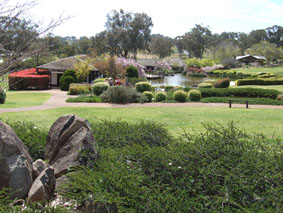
There is an increasing interest in producing ‘Zen’ style gardens in Australia – and plants such as Bamboo and Photinia and Virburnums that one traditionally associates with ‘Japanese’ style gardens need not be instilled using such plants – as in Japan – there was no knowledgeof Australian plants until the late 1900’s and there has been increasing interest in Australian Plants in Japan as well as worldwide – especially now with the increasing heat that has been predicted due to climate change.
How one deals with gardens and garden maintenance is extremely important. Ideally the best place to start is with carefully selected appropriate plants that have large temperature ranges – and can deal with higher temperatures and also with potentially down pours of rain – to almost flood like proportions.
Trees such as Brachichyton populneus and Podacarpus elatus are 2 native trees with an amazing range and are older than most plants on this planet.
I will post list of possible trees, shrubs and grasses that could be considered alternative ‘Japanese’ plants to use throughout Australia and the world.
This could develop the style of Japanese gardens beyond what is appreciated today – and I believe the Japanese style has definate opportunities to increase in its worldwide appeal, even more if the best plants are chosen beforehand.
It is important to note however that nothing can replace the Japanese pruning practice – of tight clipping and shaping – that is done throughout the year – and speciific plant species need to adapt to this type of maintenance.
There are a set of sylistic practices used in Japanese Gardens and are to be considered the principle elements in any Japanese Garden.



Leave a Reply